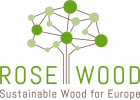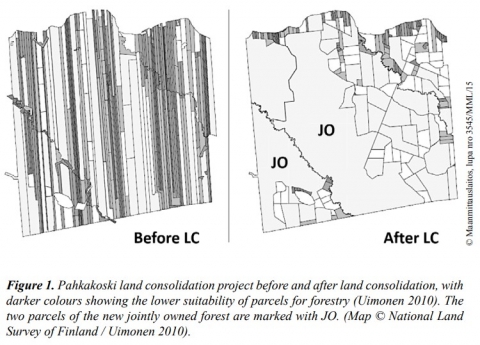Jointly Owned Forests and Forest Land Consolidation in Finland
Fragmented ownership structure is one of the main challenges of wood mobilization in Europe. Small-sized, dispersed forest property with difficult access to forests results in high costs for timber harvesting per hectare. The joint forests have been established in Finland since the end of the 1800. In the beginning of 2019 there were 460 common forests in Finland. The establishment of the common forest and the incorporation to existing joint forests have recently become more widespread. The total area of common forests is growing and it is already more than 700 000 ha. There are about 25 000 stakeholder in the common forests of our country, and they include over 5% of the surface area of our private forest. The smallest common forest is less than 20 hectares, while the largest, Kuusamo common forest has over 90 000 hectares of territory. The largest common forests are in North-Eastern Finland.
Changes in the common forest law have facilitated the integration of common forests and the creation of new joint forests. The common forest can provide a good and workable solution to many objectives of modern forest ownership. The common forest is a shared forest area for operating sustainable forestry in favour of the shareholder forest estates. The common forests are privately owned and have no public-law character or obligation. According to the Common Forestry Act, common forest must be used primarily for operating sustainable forestry. Sustainable forestry includes economic, social and ecological sustainability. The shareholders of common forest decide how to emphasise the utilization of different areas for the purposes of sustainable forestry.
There is a need for raising awareness of the positive possibilities of forest consolidation, including:
- Bigger forest units with easier access to forest property
- More cost-efficiency in harvesting, smaller unit costs in work and supplies
- Ease of foundation and joining$Ease of owning forest
- Better forest management with constant profits
- Easier management and administration
- Tax relief, lower income taxation
- Better recreational possibilities
- Functional and democratic administration
- Simple and safe investment
Positive through centralized wood storage and impact to environment
Requires access to forest estate information.


